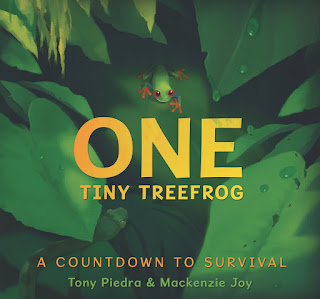I will share a new book filled with ten-word stories in a few days. The author Joseph Coelho invited twenty illustrators to contribute to his book. I knew many of the names but there were a few I needed to investigate. One name that was new to me is Chuck Groenink. His name really caught my eye.
His webpage tells me: Chuck grew up in the Netherlands, where he spent his formative years climbing trees, drawing, reading, and cycling. He attended the Artez Institute of Visual Arts in Kampen, graduating from its department of Illustration in 2004. Since 2010 he has resided in the United States, going from Portland, Oregon, to Kinderhook, New York where he lives with his wife, dog, three cats, and several rowdy chickens.
Here is his instagram page.
Read a few blurbs:
16 Words by Lisa Rogers: This simple nonfiction picture book about the beloved American poet William Carlos Williams is also about how being mindful can result in the creation of a great poem like "The Red Wheelbarrow"--which is only sixteen words long. "Look out the window. What do you see? If you are Dr. William Carlos Williams, you see a wheelbarrow. A drizzle of rain. Chickens scratching in the damp earth." The wheelbarrow belongs to Thaddeus Marshall, a street vendor, who every day goes to work selling vegetables on the streets of Rutherford, New Jersey. That simple action inspires poet and doctor Williams to pick up some of his own tools--a pen and paper--and write his most famous poem. Kirkus Star review - Groenink’s richly layered, chalky illustrations expressively realize in muted earth tones the all-important everyday elements of Williams’ world.
Grandpa is here by Tanya Rosie: Grandpa is finally here to visit! He’s brought a suitcase smelling of Persian spices, walnuts picked from his trees at home, and sparkly saffron to make yellow rice. And Grandpa and granddaughter have so much they want to see and do together. She shows him all her favorite things: the mountaintops, the tunnel she discovered, and the horse in the field. If only Grandpa could stay longer, then he could see the spring—but when time together is limited, it feels all the sweeter and more special. (sequel to Mum me and the Mulberry Tree). Read the Kirkus review.
I am not a fox by Karina Wolf: When Luca first arrives at the dog park, the other dogs turn him away. "You're not a dog," they say, "You're a fox." But . . . Luca likes to chase cats. He likes to yip at mailmen. And he likes sniff other dogs you-know-where. Still, Luca has to admit, he doesn't look like the other dogs. So . . . he must be a fox, right? But when Luca finds a trio of foxes in the forest and asks to join them, they don't think that Luca is a fox at all. After all, Luca acts just like a dog. Luca can't seem to find anyone quite like him, but then he meets a caring little girl and finds something even better--a friend. In this heartwarming tale, Karina Wolf and Chuck Groenick remind us that you don't need a label to find just where you belong.
The Friend Ship by Kat Yeh is a book to share with your young class at the start of the year. My friend from Kinderbookswitheverything has a teacher who reads this and then the class fill a ship wall mural with their own faces. Such a terrific way to remind everyone in a class that we can all be friends and support one another on our learning journey. Speaking of journeys, the end papers of this book show firstly a world map and then the same world map with the dotted outline of their long journey of discovery. (A mapping unit idea). I also love the double meaning of the title - friends in a ship who eventually work out they have actually found friendship. The characters in this story are a few of my own favourite animals - beaver, hedgehog, and a capybara. I adore the repeated line 'yes, yes, yes, yes-yessity-yes.' Oh, and you can see a lighthouse in this illustration.
I previously talked about another book by Kat Yeh:






























